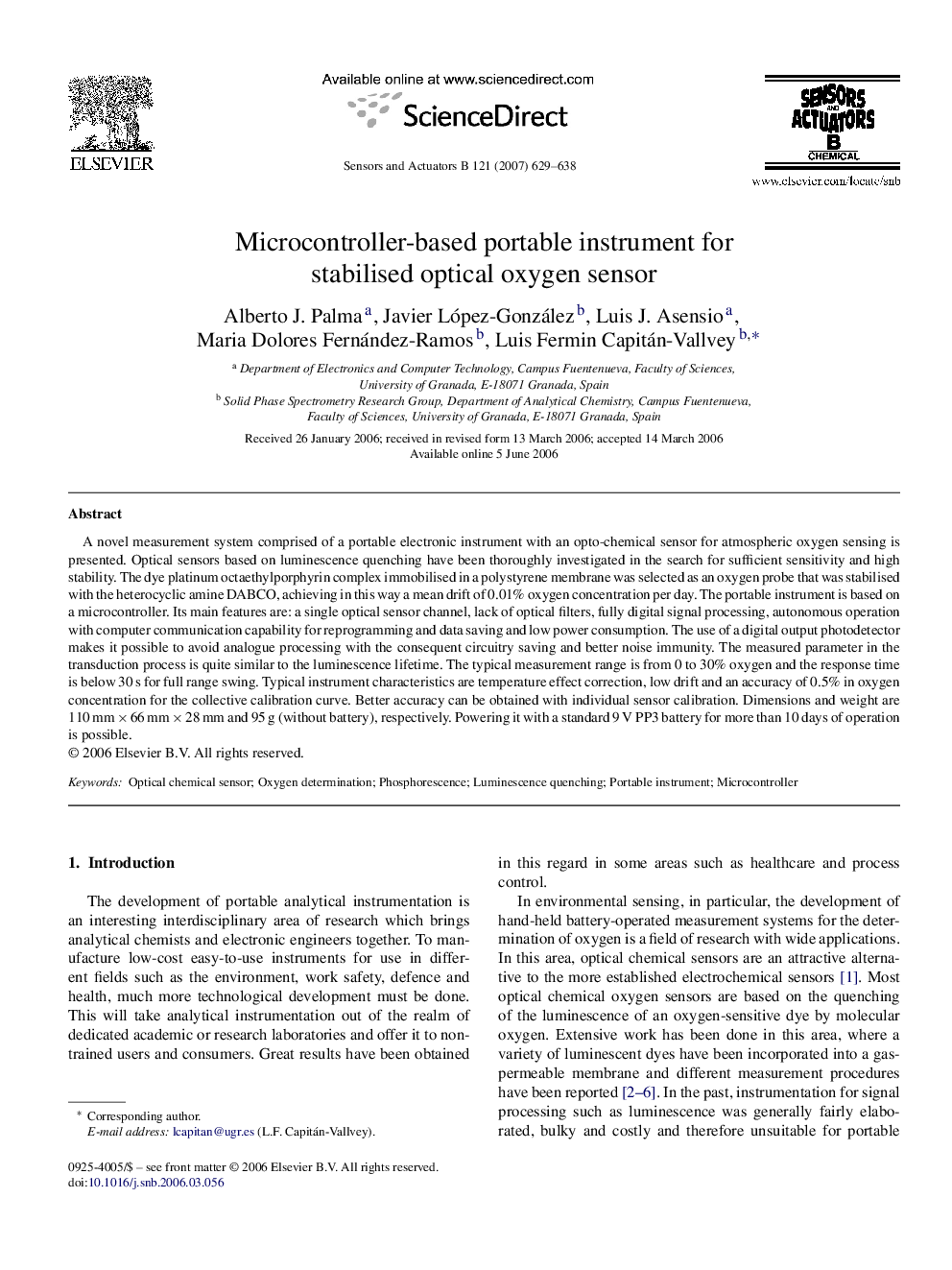| Article ID | Journal | Published Year | Pages | File Type |
|---|---|---|---|---|
| 746938 | Sensors and Actuators B: Chemical | 2007 | 10 Pages |
A novel measurement system comprised of a portable electronic instrument with an opto-chemical sensor for atmospheric oxygen sensing is presented. Optical sensors based on luminescence quenching have been thoroughly investigated in the search for sufficient sensitivity and high stability. The dye platinum octaethylporphyrin complex immobilised in a polystyrene membrane was selected as an oxygen probe that was stabilised with the heterocyclic amine DABCO, achieving in this way a mean drift of 0.01% oxygen concentration per day. The portable instrument is based on a microcontroller. Its main features are: a single optical sensor channel, lack of optical filters, fully digital signal processing, autonomous operation with computer communication capability for reprogramming and data saving and low power consumption. The use of a digital output photodetector makes it possible to avoid analogue processing with the consequent circuitry saving and better noise immunity. The measured parameter in the transduction process is quite similar to the luminescence lifetime. The typical measurement range is from 0 to 30% oxygen and the response time is below 30 s for full range swing. Typical instrument characteristics are temperature effect correction, low drift and an accuracy of 0.5% in oxygen concentration for the collective calibration curve. Better accuracy can be obtained with individual sensor calibration. Dimensions and weight are 110 mm × 66 mm × 28 mm and 95 g (without battery), respectively. Powering it with a standard 9 V PP3 battery for more than 10 days of operation is possible.
